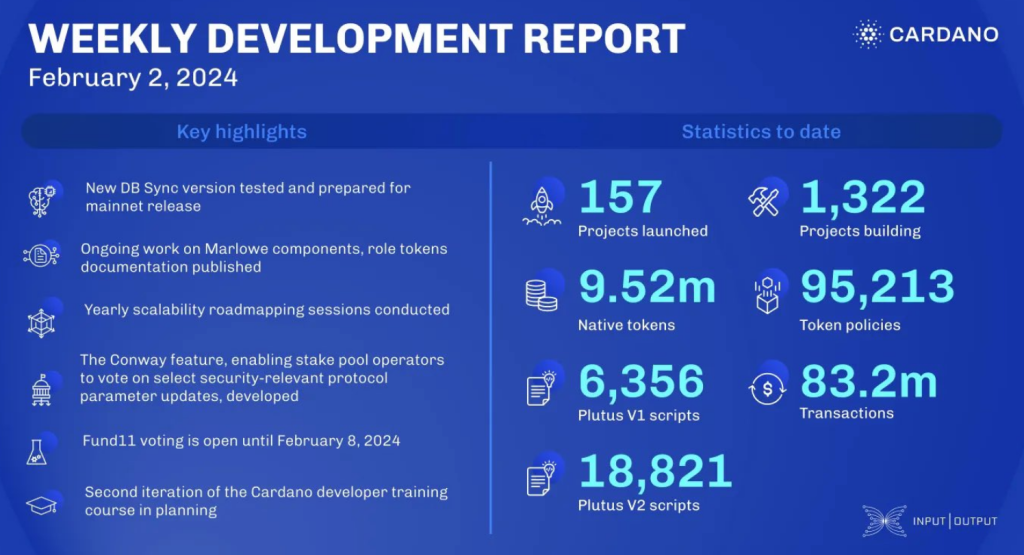Cardano, a blockchain platform known for its research-oriented strategy and eco-friendly Proof-of-Stake consensus, is experiencing substantial growth. Increased transaction volumes, a variety of project launches and active development within the ecosystem underline this expansion.
Cardano transaction tree
December and January saw Cardano process more than 4 million transactions, with a significant increase in activity in the chain. This growth aligns with the platform’s ambition to become a scalable and sustainable blockchain for real-world applications.
The blockchain platform not only processes transactions; it attracts developers and projects. Eight new projects have been launched on Cardano in the past two months, and another seventeen are currently in development. This brings the total to 157 already launched and 1,320 in progress, indicating a thriving and diverse ecosystem.
#Cardano fam. It’s the weekly update!!
Check out the great thread from @IOHKMedia.
What struck me: 4 MILLION transactions made @Cardano in the past 2 months
$ADA https://t.co/6S20nATGJS pic.twitter.com/TFOI8DNKrE
— Chris O (@TheOCcryptobro) February 2, 2024
Technology in motion
Cardanos technological progress drives growth. The number of token policies on the platform soared, leading to the production of 480,000 new native tokens. Additionally, Plutus scripts, which enable smart contracts on Cardano, saw substantial growth, with both V1 and V2 scripts seeing significant increases.

Project Catalyst, Cardano’s community-driven financing initiative, drives engagement and innovation. In Fund11’s second week of voting, nearly 5,000 wallets cast more than 150,000 votes on 920 proposals seeking community funding. This active participation highlights the strong community support for Cardano’s development.
Cardano currently trading at $0.50 on the daily chart: TradingView.com
ADA price increases
Reflecting the overall positive sentiment, Cardano’s native token, ADA, saw a price increase of 1.3% in the past 24 hours and 7.4% in the past week.
While the report paints a positive picture, it is crucial to recognize the wider context. Cardano faces competition from established players such as Ethereum and emerging blockchains. Regulatory uncertainty surrounding cryptocurrencies remains a factor, and while Cardano is touted as energy efficient, Cardano’s environmental impact compared to other blockchains is still in question.
Cardano’s eco-friendly footprint
Charles Hoskinson created Cardano as a peer-reviewed blockchain, but what sets it apart is the Ouroboros proof-of-stake system. Compared to Bitcoin, Cardano’s energy-efficient methodology allows it to conduct transactions with a much smaller impact on the environment.
According to CExplorer, Cardano’s annual energy consumption is a paltry 2,602 GWh. It is therefore approximately 214,672 times more energy efficient than Bitcoin.
Cardano’s PoS system is scalable, flexible and customizable, making it a viable option for investors concerned about the environmental impact of their cryptocurrency holdings.
Overall, Cardano’s recent growth momentum suggests a promising future for the platform. However, navigating the competitive landscape, changing regulations and sustainability issues will be critical to ensuring long-term success.
Featured image from VistaCreate, chart from TradingView
Disclaimer: The article is for educational purposes only. It does not represent NewsBTC’s views on buying, selling or holding investments and of course investing involves risks. You are advised to conduct your own research before making any investment decisions. Use the information on this website entirely at your own risk.


